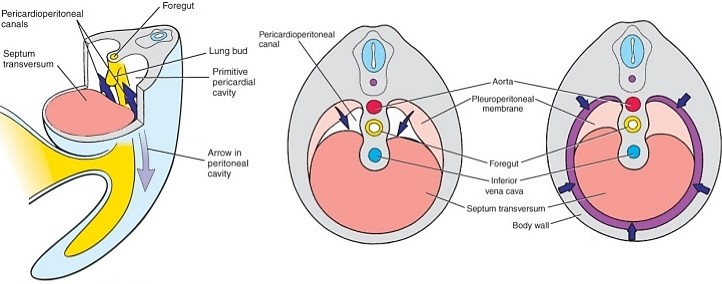Let’s go back to the 4th week during the development of heart. The primitive intraembryonic coelom forms in the lateral and cardiogenic mesoderm during 4th week of development. Like the heart fields, the intraembryonic coelom has a horse-shoe configuration during this period: A thick mesodermal plate called “septum transversum” lies…
Tag: Pediatrics
Section Editor: Dr. Sujit Kumar Shrestha, MD Pediatrics, Fellowship Neonatology
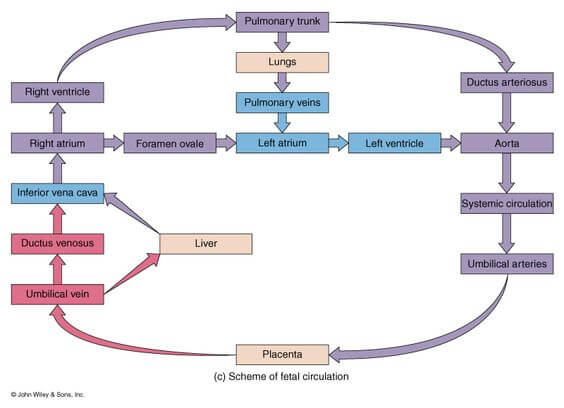
Fetal Circulation Made Easy
Following are the important features of fetal circulation: 1. Placenta plays the role of lungs; lungs are not functional: Like pulmonary veins, left umbilical vein carries highly oxygenated blood from placenta to heart. Like pulmonary artery, right and left umbilical arteries braing deoxygenated blood to placenta. 2. Mixing potentially occurs…
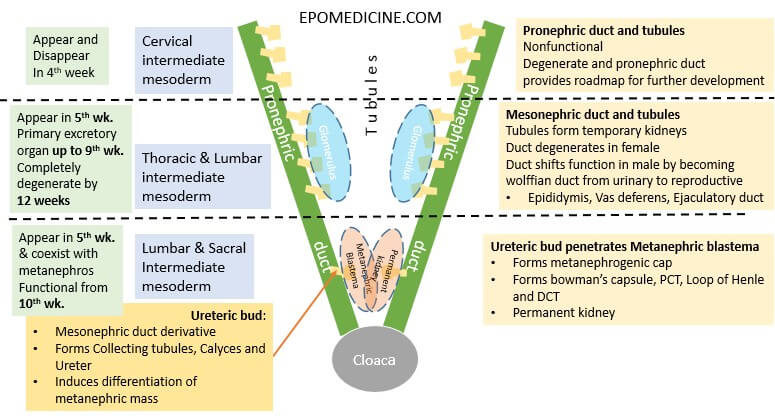
Renal (Kidney) Development – Embryology Made Easy
Kidney development occurs chronologically from cranial to caudal direction from urogenital ridge (intermediate mesoderm) in 3 different phases. Intermediate mesoderm → urogenital ridge (longitudinal elevation along dorsal body wall) → nephrogenic cord → Pronephros, Mesonephros and Metanephric mesoderm/blastema Remember the embryology of brain – from cranial to caudal, the primordial…
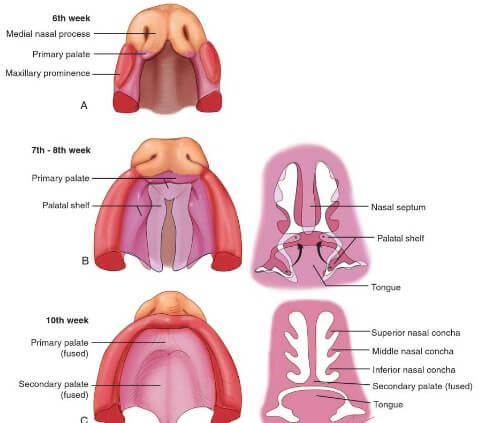
Face and Palate Development – Embryology made Easy
4 week embryo 5 mesenchymal prominences (facial primordia) appear in relation to the stomodeum (a depression in the surface ectoderm which marks the future mouth and oral cavity): Cranially: Frontonasal prominence (unpaired) Laterally: Maxillary prominence (paired; 1st pharyngeal arch) Caudally: Mandibular prominence (paired; 1st pharyngeal arch) 5 week embryo Localized…

Heart Development – Embryology Made Easy
Heart Tube At the beginning of 4th week of development, heart is a continuous and valveless linear tube that resembles a chicken hung upside-down. It consists of 5 embryonic dilatation, that are destined to be the inflow and outflow tract and compartments of the hear without septum and valves. From cranial…
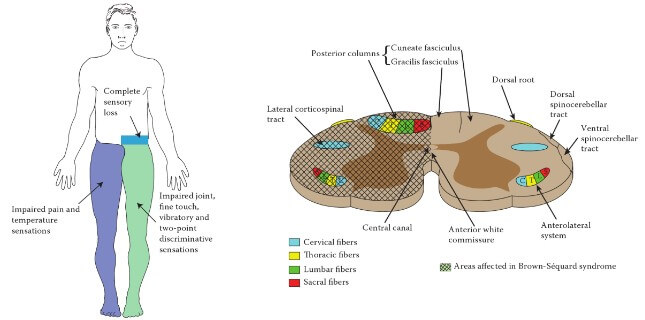
Brown-Sequard Syndrome – Anatomical Basis
Definition of Brown Sequard Syndrome Neurological syndrome resulting from spinal cord hemisection (damage to one lateral half of spinal cord). Causes of Brown Sequard Syndrome Penetrating trauma Spinal fractures Spinal dislocation Disc herniation Vasculitis Radiation induced injury Clinical Manifestations and Anatomical Basis of Brown Sequard Syndrome 1. Damage of Corticospinal…
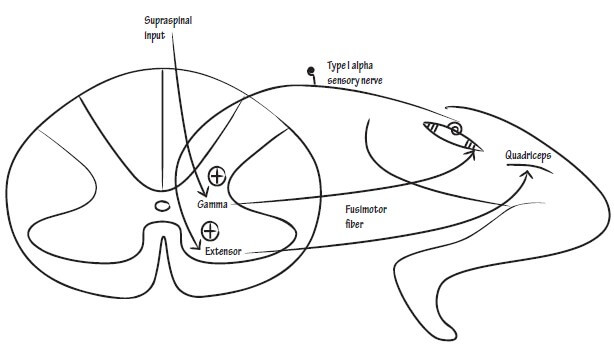
Lower Motor Neuron Lesion (LMNL) – Anatomical Basis
The anatomical basis of Upper Motor Neuron Lesion (UMNL) has already been discussed earlier. Similarly, we will explain the anatomical basis of clinical syndrome of Lower Motor Neuron Lesion (LMNL). A. Ipsilateral involvment: Lower motor neuron comprises of motor neurons in the anterior neurons and the fibers originating from them,…

Upper Motor Neuron Lesions (UMNL) – Anatomical Basis
For the purpose of remembering the clinical manifestations of upper motor neuron lesion (UMNL) and lower motor neuron lesion (LMNL), a mnemonic has already been devised and discussed here. Now, it’s time to understand the anatomical and physiological basis of these manifestations. Upper Motor Neuron Lesion (UMNL) Syndrome Acute Manifestations…
